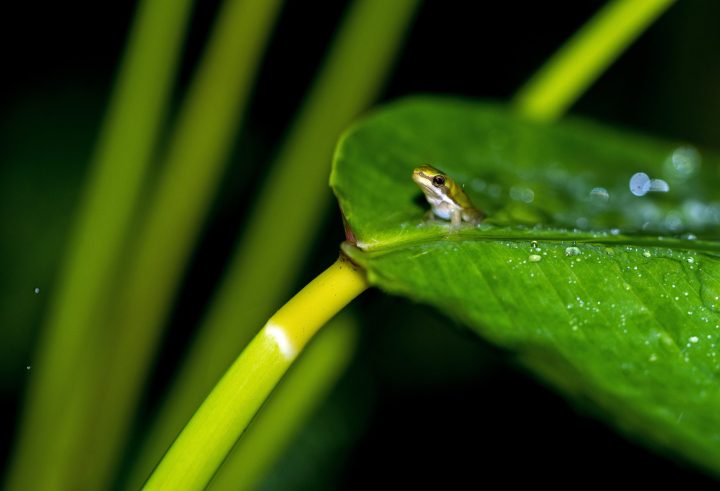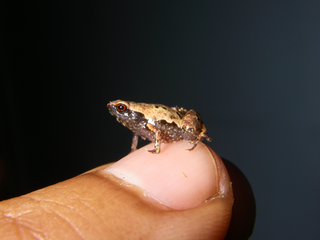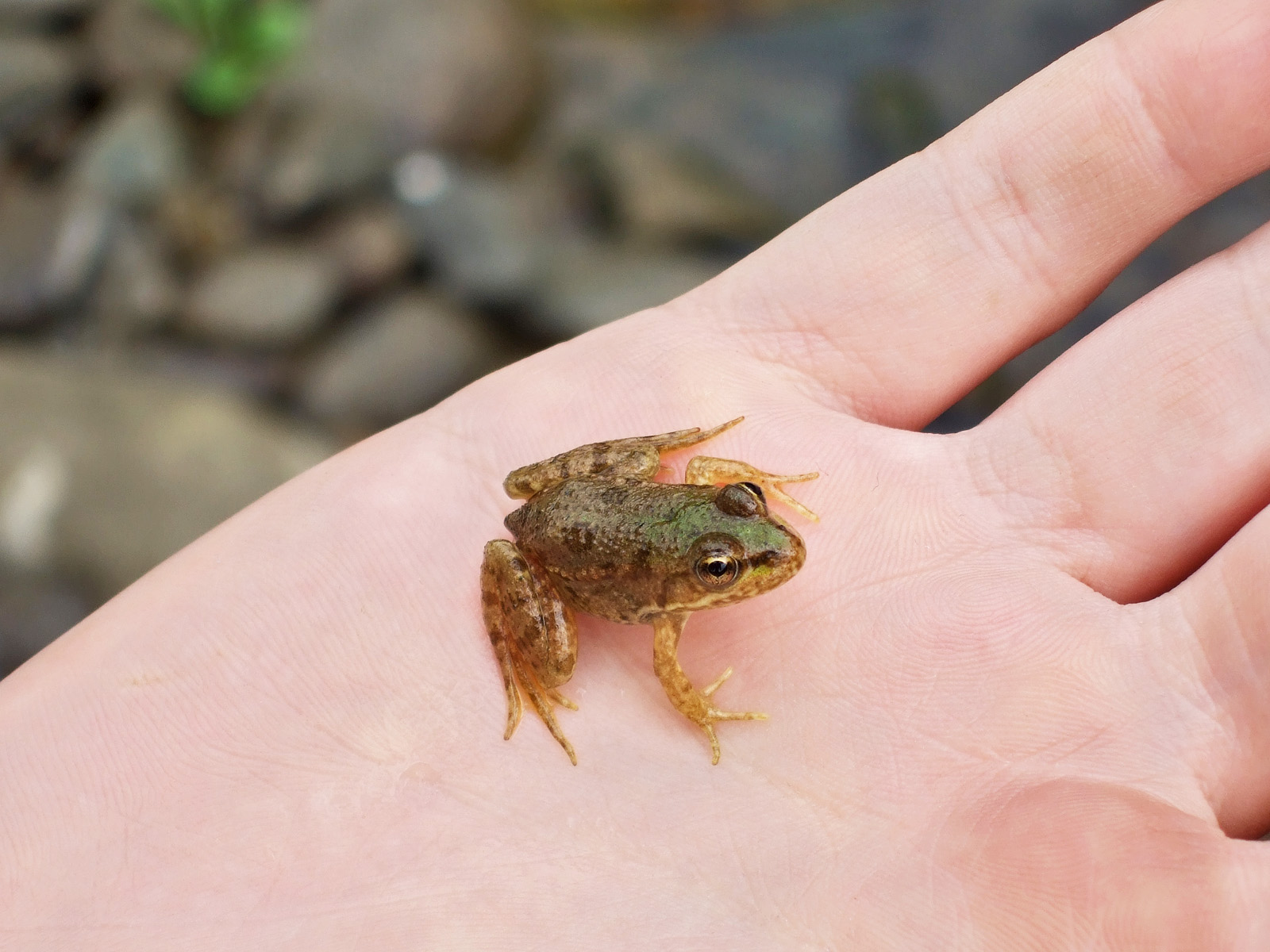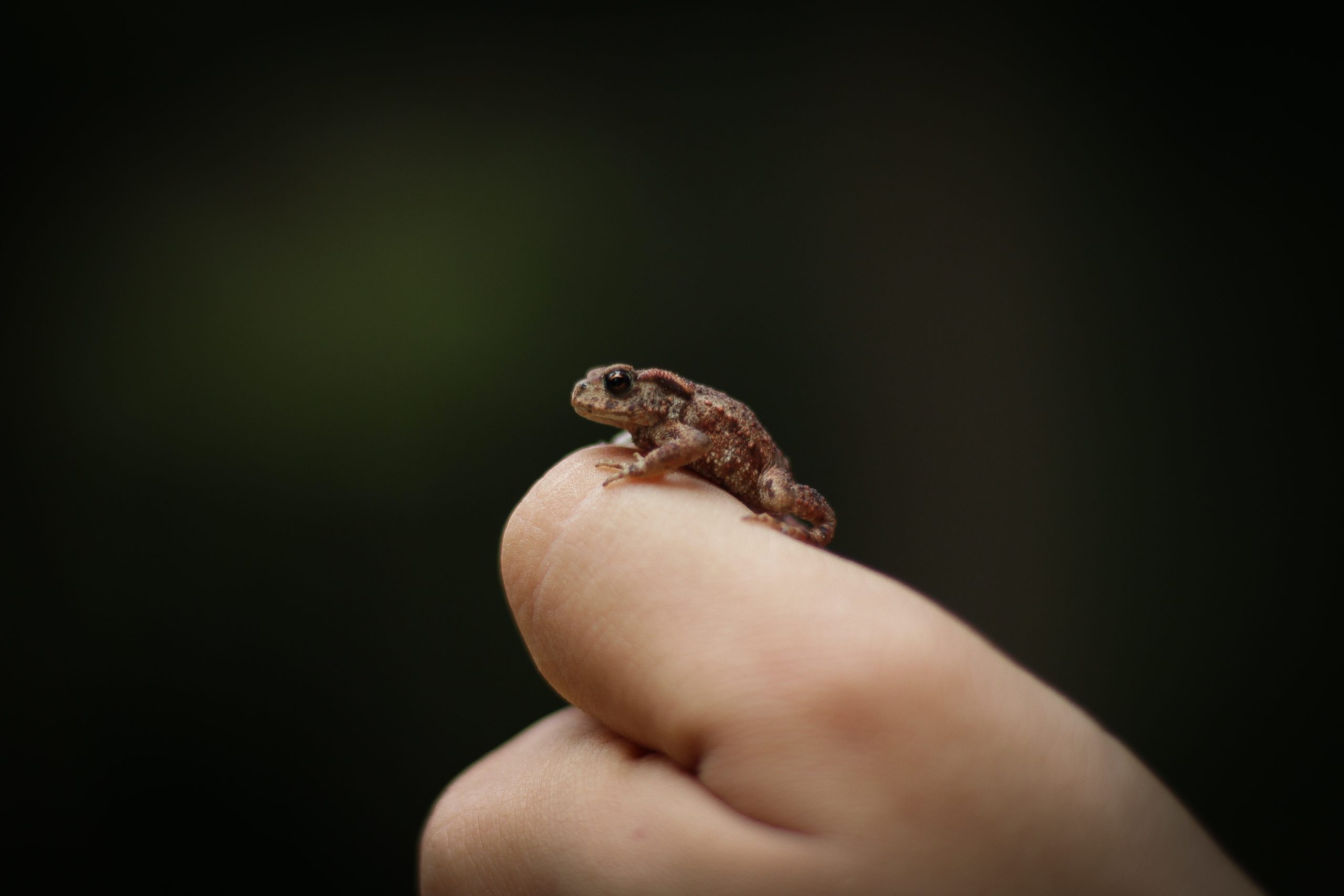NATURAL WORLD
Gweek-gwaark: Wild orchestras of the night

The dark centre of a city racecourse – surrounded by street lights and roaring trucks – harbours some of the most vulnerable treasure on earth: frogs.
With his hands cupped to his ears, mouth open and his thick, long ponytail, Marius Burger looked, just then, remarkably like a surprised bat-eared fox.
On the nearby highway a truck sledgehammered brute sound into the darkness and a motorbike sliced the night like a white-hot machete.
“You hear that?” Burger demanded. “Ping-ping-ping-ping-ping like a tiny marble dropped onto a hard surface? Dainty frog – Cacosternum platys. Over there. Hang on, I’ll find it.”
He squelched through the soggy wetland, his long-suffering jeans clinging to his wet calves, and crouched, all bewhiskered attention, seeking the single note in the wild symphony of sound.
Frog atlassing is a business bordering on madness.
Then he scooped up a tiny frog, no bigger than his fingernail, and sloshed back, grinning widely, to reveal the marble-dropper.
The scene was surreal. Our horizon was studded with rows of lemon-coloured street lights and city sound. To the west, the dark silhouette of Devil’s Peak stabbed through central Cape Town’s eerie glow and, nearer at hand, marched the ghost-white barrier posts of the Kenilworth Race Course.
Gossamers of mist drifted over the wetland, sliding through our torch beams and hovering protectively over deep pools.
Around us, in the dark centre of the busy city, was a shrine to the Red Data Book of endangered species and a full orchestra of frogsong – heard by few and whose contract with the planet could soon expire.
The frog we were hunting, though, was not the dainty Cacos, it was tiny – a micro frog, one of the smallest of its family in the world and dangerously rare. Its Latin name, Microbatrachella capensis, is considerably longer than the frog itself.
This speckle of biodiversity lives in the centre of the racecourse, with possibly a few more around Betty’s Bay and Cape Agulhas. Of course they have no idea they’re rare and, as I shivered in the dark, a declining number of males were bidding for a declining number of females in curious, scratchy tones.
Burger, I noticed, didn’t seem to be cold. He’s a long-time frogger – in fact he was national coordinator of the Southern African Frog Atlas Project – so soggy nights are his thing.
Back in his Grahamstown days he used to be known as the Snake Man, and was blackballed from the local pet shop for feeding cuddly little hamsters to his two-metre python. These days, though, it’s frogs that get him going.
Frog atlassing is a business bordering on madness.
The problem is that unless you know how many of what frogs are where, you can’t know whether they’re doing well or declining. So these wacky herpetologists have divided South Africa into a grid with ‘cells’ of 15 degrees latitude and 15 degrees longitude (about 27km by 23km) and go hunting frogs with a GPS in one hand and a torch in the other.
Of course, frogging is best done at night… when it’s raining. Naturally.
“I start around 6pm and work the whole night,” Burger explained. “Maybe I’ll travel 1,000km in three days covering a cell. Sometimes it can take several hours to locate a single frog.
“It can mess with your social life a bit. People used to be really interested in snakes. Nowadays if I say: ‘Hello, I’m Marius, I like frogs’, not many people can run with that line of conversation.”
He’s had some tense moments poking around the backroads of the country; farmers get jumpy, understandably, and arrive with bakkies and guns. Police have been called to arrest the “stockthief”.
Being nocturnal and insatiably curious creatures by profession, froggers can get into some really odd scrapes. Frog hunting in the Central African Republic, Burger and some other herpetologists were cut off from their base by rebel forces. They had to backtrack into the jungle, travel down a river by dugout and jump the border into Cameroon, then talk their way onto a plane to Paris.
Then there’s the Gabonese tart story. “I was working in Libreville,” Burger explains as we head for another racecourse pool. “At some stage I picked up a fungal infection on my feet.
“I took out two condoms. She looked at me. I put one on each foot and took out a pair of latex gloves and put them on my hands.”
“I heard some frogs calling in a marsh in town. I could smell it wasn’t a good marsh, but I was curious so I worked out a cunning plan.
“I left the hotel with my torch that night. But just outside, a lady of the night said ‘Bonsoir, Monsieur. I am Nellie. You want some lurve tonight?’ I tried to brush her off but she followed me. Then I thought ‘Bugger this, I’m going to carry on with my plan’.
“I took out two condoms. She looked at me. I put one on each foot and took out a pair of latex gloves and put them on my hands. Her eyes were like saucers. Then I said ‘Bye Nellie’ and walked into the swamp.
“When I came out she was gone. But imagine the stories she told her friends about this crazy mzungu with condoms on his feet…”
A frogger’s most important piece of equipment, however, is not latex or a torch, but his ears. Male frogs are irrepressibly vocal wooers. They gwaak, blip, squeak, mew, squawk, bray, snore, quack, buzz, chirrup and some, when threatened, scream horribly.
They were originally divided into species according to their appearance – generally from dead museum exhibits. But it’s become increasingly clear that that isn’t how frogs do it. A single species can come in many colours or patterns, but what’s all important is its call.
“A frog may go tik, tik, tik, gweek,” Burger explains. “One part of the call may be aggression towards other males and another part a song to the female. Even in the gweek there are bits that she responds to and bits she ignores. She’s virtually deaf to everything but the blip in the gweek.
“No blip means no breeding will be possible. And that really means a different species. So these days we are approaching frogs with a finer ear.
“By just looking at frogs as though they were a box of Smarties and not listening to their conversations, we were denying them their wonderful complexity.
“For frogs it’s more important what you say and how you say it than how you look. These are creatures of the night, remember. And the gift of the gab wins the woman.”
When frogs call, they look as though they’re blowing up a balloon. This is because they shout with their mouths closed, pumping air across their larynx between their lungs and a cavity that inflates under their lower jaw.
Then they shove the air back into their lungs and do it all over again. This results in some very nifty sound effects – and, during call sessions, an ungainly looking frog.
Male frogs get pretty excited about mating.
Any frog that hops into sight when a male’s calling into the night will be clasped, whether it’s male or female. So frogs have even developed a “let me go, you idiot” call that evokes instant release and, perhaps, slight froggy embarrassment.
Some frogs virtually glue themselves to the backs of females for months to make sure they’re ‘The One’ when eggs appear; other species clasp each other in large mating orgy balls.
There are, at last count, 110 species of frog in South Africa and each has a unique call. Burger records them, then runs the sounds through a computer that selects individual frog calls, creating an unmistakable visual imprint.
“Basically, I’m barcoding frogs,” he chuckles. “It’s the best way to sort out species. There will be a good number of new species described before we’ve finished this.”
Although the atlassing project gives the impression there are more frogs around than we imagined – simply because more are being counted – frog numbers are declining.
A moment later he was back with a tiny, utterly beautiful frog with a dashing racing stripe down its back.
At a World Conservation Union conference about 25 years ago, herpetologists compared notes and realised that mass mortalities were occurring all over the world. In pristine rainforests you’d see dead frogs lying all over the place. Nobody had seen such a die-off before.
A task force was set up to investigate and it has come up with some tentative answers. These include the usual culprits of increased ultraviolet radiation from ozone thinning, acid rain, river pollution from industrial runoff, agricultural herbicides and destruction of natural habitats.
Another possible cause could be the common platanna (Xenopus laevis). These South African frogs were exported all over the world for use in laboratories and, curiously, in human pregnancy testing.
They were recently found to carry a pathogenic fungus which doesn’t affect them but can wipe out other frogs. The die-offs have been recorded mostly in those places to which it was exported. The malaise might go down in natural history as Platanna’s Revenge.
Berger suddenly got a faraway look, cupped his hands to his ears, then squelched back into the pool. A moment later he was back with a tiny, utterly beautiful frog with a dashing racing stripe down its back.
“Say hi to a micro frog,” he said, “Not many people have seen it.” Then headed back to place it exactly where he found it.

Micro-frog (WikiCommon)

Micro-frog (WikiCommon)

Sergiu Nista for Unsplash
After our frog-hunting trip I came across a management plan that had been drawn up for Kenilworth racecourse. It turned out the place was more than merely a refuge for one of the world’s rarest frogs. It’s an absolute treasure trove.
The course was founded in 1882 and the layout of the track has changed little since then. So while roads and houses gobbled up the sand-plain fynbos and horses thundered round the perimeter year after year, the centre was blissfully abandoned to nature.
Some 220 plant species have been listed there; 19 of these endangered Red Data Book species. It’s host to some 79 species of bird, including the rare marsh owl, and 13 species of frog. Of the latter, one is vulnerable (the Cape rain frog), one is endangered (the Cape platanna) and the third, the micro frog, is listed as critically endangered.
The area has more than 21 red data species per square kilometre, certainly the highest of anywhere in the world. It’s one of the hottest spots for endangered creatures on earth.
That’s one big gwaak for a small racecourse. All power to the sport of kings. DM/ML















 Become an Insider
Become an Insider
Sad to see that frogs in Johannesburg are also disappearing – they were common in gardens not long ago: too many walls and chlorinated swimming pools now…?
Thank you, fascinating and entertaining!